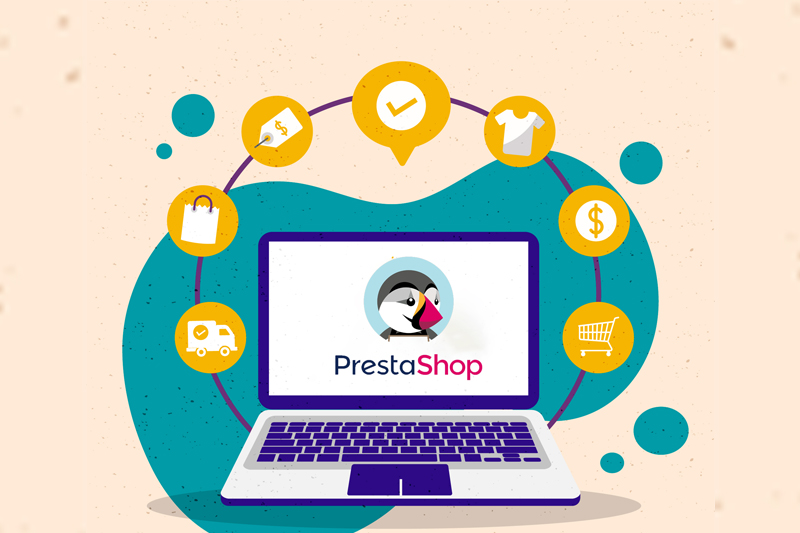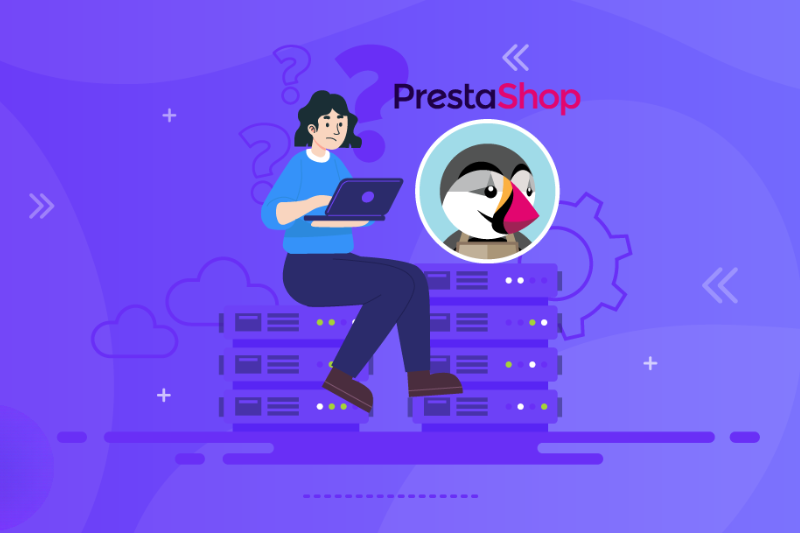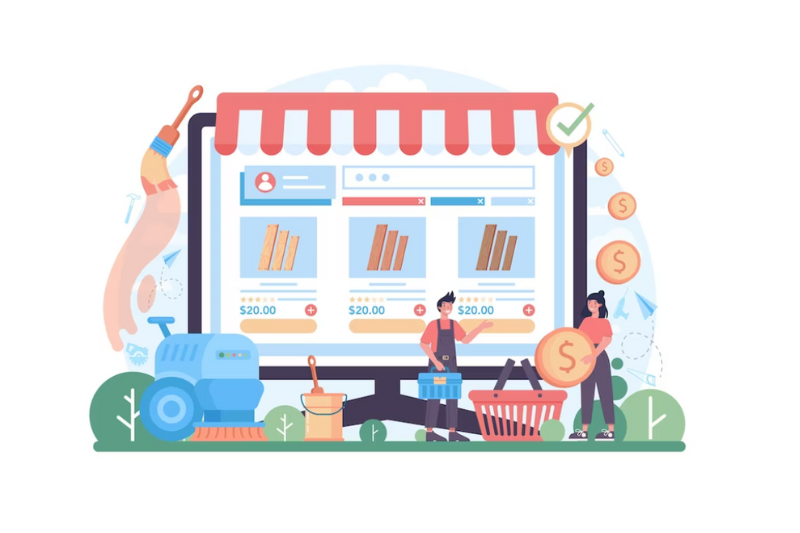- Python
- Java
- Javascript / Jquery
- C, C# & C++
- SQL
- PHP
- Go
- Ajax
- Visual Basic (ms office)
- Angular
- Laravel
- .net & asp.net
- Flex, Flash
- Linux
- Swift
- Rust
- Matlab
- Django
- Ruby On Rails
- MEAN Stack
- MERN Stack
- MEVN Stack
- LAMP Stack
- LEMP Stack
- LAPP Stack
- LEAP Stack
- LLMP Stack
- XAMPP Stack
- WAMP Stack
- WIMP Stack
- MAMP Stack
- Flutter Stack
- Serverless Stack
- Misc & Others
- Browse All Categories
PrestaShop E-commerce Platform: A Comprehensive Guide for Successful Online Store
PrestaShop is an open-source e-commerce platform that was launched in 2007 by Igor Schlumberger and Bruno Lévêque in Paris, France. Their vision was to create a platform that would empower entrepreneurs and merchants to establish their online presence without the need for extensive technical knowledge It has earned a lot of popularity in all these years because of the clean UI, tons of customization options, and good community support. With PrestaShop, entrepreneurs and merchants have complete control over their online stores, allowing them to tailor their websites to their specific business needs. This level of control and flexibility sets PrestaShop apart from other e-commerce platforms, making it a preferred choice for businesses worldwide.
PrestaShop's key advantage lies in its customization capabilities. Users can choose from a wide range of themes and templates to create visually appealing and unique online stores. Further customization using custom CSS and JavaScript allows businesses to match their brand identity and meet specific requirements. Additionally, PrestaShop places a strong emphasis on search engine optimization (SEO), enabling users to optimize product descriptions, meta tags, and URLs for improved visibility in search engine results. This emphasis on SEO drives organic traffic and increases the likelihood of attracting potential customers.

Features of Prestashop e-commerce
PrestaShop offers a wide range of key features that make it a popular choice for building an e-commerce store These are:
- Easy to use for beginners and experienced users.
- Freedom to customize design, layout, and functionality.
- Simplifies catalog creation, inventory, and pricing.
- Built-in features to improve store visibility in search engines.
- Supports multiple payment gateways for customer convenience.
- Efficiently process orders, track shipments, and handle customer data.
- Control multiple stores from a single admin panel.
- Multilingual, multicurrency, and tax system options for global businesses.
- Built-in tools to track performance and analyze sales data.
- Responsive design options and mobile-friendly themes.
Getting started with Prestashop E-commerce

Choosing and Installing PrestaShop
Choosing and installing PrestaShop is essential for creating a successful e-commerce website. Consider features, customization options, and compatibility with your business needs. PrestaShop offers multiple payment gateways, product management, and customer tools. Download the latest version from the official website, ensure your web hosting meets requirements, and follow the installation wizard. Configure settings like store name, database connection, and admin login. Customize your store, add products, and design the layout for a unique shopping experience.

Configuring Your Store
Configuring your store is a crucial step in building an effective e-commerce website. In PrestaShop, you can customize various settings to align your store with your business needs. Start by adjusting general settings such as store name, logo, and contact information. Set up payment gateways and shipping methods that suit your customers' preferences. Configure tax rules and currency options to ensure accurate pricing. Utilize PrestaShop's powerful modules and themes to enhance the functionality and visual appeal of your store. Take advantage of the available tools for SEO optimization, customer management, and analytics to maximize your store's performance. By configuring your store properly, you will be able to create a smooth and customized shopping experience for your customers.

Managing Products and Categories
Managing products and categories in PrestaShop is crucial for an e-commerce store. Add, update, and organize products with an intuitive interface. Create categories for easy navigation. Include product details like titles, descriptions, prices, and images. Utilize advanced options for attributes, combinations, and variations. Keep inventory updated and manage availability. Set up discounts, promotions, and special offers. Optimize product listings for appeal and relevance. Provide a seamless shopping experience and drive online store success.

Enhancing Your Store's Functionality
Enhance your PrestaShop store's functionality for optimal performance. Use modules and extensions to add features and improve user experience. Customize the design with a visually appealing theme. Optimize loading speed and ensure mobile responsiveness. Implement search functionality, social media integration, and customer reviews. Offer personalized recommendations to customers. Keep modules, themes, and PrestaShop updated for new features and security. Provide a seamless shopping experience. Drive growth and success for your online business.

Setting Up Payment and Shipping Methods
Setting up payment and shipping methods is essential for your PrestaShop e-commerce store. Choose and configure payment gateways that align with your customer's preferences and provide secure transactions. Popular options include PayPal, Stripe, and Authorize.Net. You will also have to make sure that the payment process is smooth and user-friendly. Additionally, set up shipping methods that cater to your customer's needs, such as flat rates, free shipping, or carrier-specific rates. Configure shipping zones, rates, and restrictions based on location and order weight. Offer tracking options to provide transparency to customers. Regularly review and update your payment and shipping methods to adapt to changing customer demands. By providing convenient and reliable payment and shipping options, you can enhance the overall shopping experience and increase customer satisfaction.

Implementing SEO Strategies
Implementing SEO strategies is crucial for optimizing the visibility and discoverability of your PrestaShop e-commerce website. Start by conducting keyword research to identify relevant keywords and phrases that your target audience is likely to search for. Incorporate these keywords naturally into your product descriptions, titles, URLs, and meta tags to improve your website's search engine rankings. Optimize your website's structure and navigation to ensure easy crawling and indexing by search engines. Create unique and compelling meta titles and descriptions for each page to entice users to click on your search results. Generate XML sitemaps to help search engines understand and navigate your website. Regularly monitor and analyze your website's performance using tools like Google Analytics to identify areas for improvement and track the effectiveness of your SEO efforts. By implementing effective SEO strategies, you can increase organic traffic, improve your website's visibility, and ultimately drive more conversions and sales.

Managing Orders and Customers
Managing orders and customers is a critical task for running a successful PrestaShop e-commerce store. With PrestaShop, you can efficiently handle and process customer orders. Keep track of incoming orders, update their status, and manage order fulfillment. Communicate with customers regarding their orders, providing timely updates and addressing any inquiries or issues. Utilize customer management tools to maintain a comprehensive database of customer information, including contact details and purchase history. Offer personalized customer experiences by implementing features like customer accounts, wish lists, and loyalty programs. Regularly analyze customer data to identify trends, preferences, and opportunities for improvement. By effectively managing orders and customers, you can provide excellent customer service, foster customer loyalty, and drive the success of your online store.

Monitoring and Analyzing Store Performance
Monitoring and analyzing store performance is crucial for your PrestaShop e-commerce website. Google Analytics is an excellent tool for this that can help you track things like traffic, conversion rate, and customer behavior. Monitor KPIs like average order value and customer retention. Analyze sales data to identify popular products and optimize marketing strategies. Review performance regularly to find areas for improvement. Make data-driven decisions to maximize store success. Regularly reviewing and analyzing store performance helps you stay on top of your business's progress and identify any bottlenecks or areas for growth. By using data-driven insights, you can fine-tune your operations, refine your customer targeting, and ultimately improve the overall success of your PrestaShop store.
Frequently asked Question
Learn about features from FAQ!
A: PrestaShop is an open-source e-commerce platform that helps you create and create and manage online stores. It provides a wide range of features and functionalities to help merchants sell products or services online.
A: Yes, PrestaShop is free and open-source software. You can download, install and use it without any licensing fees.
A: To run PrestaShop, you need a web server with PHP version 7.1 or later, MySQL 5.0 or later, and various PHP extensions enabled. The specific requirements may vary depending on the PrestaShop version you're using, so it's always best to refer to the official documentation for accurate details.
A: Installing PrestaShop typically involves downloading the latest version from the official website, uploading the files to your web server, creating a MySQL database, and following the installation wizard provided by PrestaShop. Detailed installation instructions are available in the official PrestaShop documentation.
A: Yes, PrestaShop allows you to customize the design of your store to match your branding and preferences. You can choose from a wide range of themes available in the PrestaShop marketplace or create your own custom theme using HTML, CSS, and PHP.
A: PrestaShop supports various payment methods, including popular options such as credit cards, PayPal, bank transfers, and more. The specific payment methods available may depend on your location and the payment modules installed on your PrestaShop store.
A: Yes, PrestaShop offers a vast marketplace where you can find and install a wide range of modules and extensions to extend the functionality of your store. These modules cover areas such as payment gateways, shipping carriers, marketing tools, and more.
A: Yes, PrestaShop includes built-in SEO features to help optimize your store for search engines. It allows you to customize meta tags, generate search engine-friendly URLs, create XML sitemaps, and manage redirects. Additionally, you can integrate PrestaShop with third-party SEO modules for advanced optimization.
A: Yes, PrestaShop supports multiple languages and currencies out of the box. You can easily configure your store to offer different languages and currencies to cater to a global customer base.
A: Yes, PrestaShop includes basic analytics and reporting features to help you monitor the performance of your store. You can view sales reports, track visitor statistics, and gain insights into your customers' behavior. Additionally, you can integrate PrestaShop with third-party analytics tools for more advanced tracking and analysis.
A: PrestaShop offers community support through forums where users can ask questions and get assistance from the community. Additionally, there are also paid support options available, including official PrestaShop support plans and the services of third-party PrestaShop experts.
Conclusion
In conclusion, PrestaShop is a robust e-commerce platform that offers a wealth of features and customization options for online businesses. With its user-friendly interface, extensive community support, and cost-effective open-source nature, PrestaShop provides a strong foundation for building and managing successful online stores. While it may require some technical knowledge and a learning curve for beginners, the flexibility and functionality offered by PrestaShop make it an excellent choice for businesses of all sizes looking to establish a powerful online presence. Whether you're a small startup or an established enterprise, PrestaShop can help you create a visually appealing and feature-rich online store that engages customers and drives sales.


